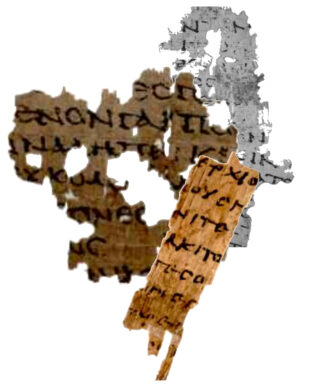
Items buried within landfills certainly take their sweet time to break down—but that’s not necessarily a bad thing. More than 100 years ago, researchers successfully excavated hundreds of thousands of legible papyrus scraps from a dry dump near Oxyrhynchus in Egypt. Since 2011, these scraps have been the main subject of study for the crowdsourced Ancient Lives project—a perfect citizen-scientist project on those stuck-indoors kinds of days.
With help from human volunteers like you and me—along with pattern-recognition software and consensus-seeking algorithms—Ancient Lives now boasts more than 10 million entries in its database. The translated texts get published in an ongoing academic series called The Oxyrhynchus Papyri. Interestingly, these contain everything from the high-minded works of Theocritus and Plato to the detritus of daily living, like leases for land and receipts for meat.
To set up Ancient Lives, papyrologists digitized and uploaded snippets of text penned mostly in Greek, the language used during a period of particular interest to scholars. However, you might encounter Coptic, Hebrew, Arabic, or Syriac characters.

To get started, visit the Ancient Lives website. Although a tutorial and field guide are available, using the interface itself is pretty straightforward. You can give it a try by clicking on “Start Transcribing.” Here, you’ll see your papyrus scrap.
Your first task is to examine the image and answer a question: “Is there a fragment with hand-written characters?” If your image includes a lonely looking measuring stick or papyrus texture sans writing, click “No,” and it’s on to the next sample. Much more likely, though, the scrap shown will feature lettering. In that case, click “Yes” and the “Next” button. Now you’re ready to try cracking the code.
Click “Add Transcription,” and then mouse over the individual letters you want to identify. If need be, you can use the buttons along the left side of your papyrus scrap to pan, zoom in or out, rotate the image, and more. Clicking on a specific letter on the sample brings up a combined Greek-and-Coptic keyboard. Mousing over the different keys on the keyboard displays each character name and a preview of known samples to help you make each identification.
If you find something that matches the character you are analyzing, select that key and click “Close.” If you’re stumped, click “Delete” and try for a different letter. Once you’ve identified as many letters as you can, click “Done.”
If you want to commune with professional and amateur papyrologists, select the “Done & Talk” button. This allows you to add comments and questions about the sample you analyzed as well as join other discussions.
For more information and to get started, visit AncientLives.org.





